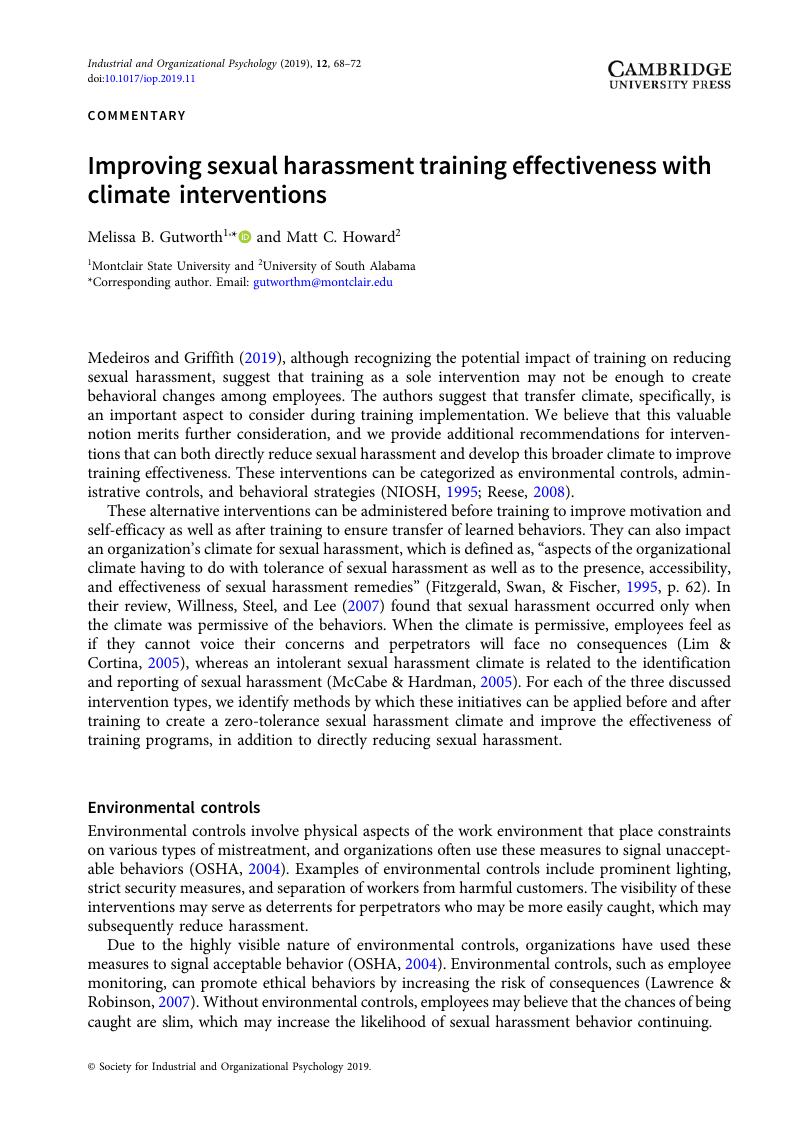Crossref Citations
This article has been cited by the following publications. This list is generated based on data provided by Crossref.
Fenwick, Karissa M.
Golden, Rachel E.
Frayne, Susan M.
Hamilton, Alison B.
Yano, Elizabeth M.
Carney, Diane V.
and
Klap, Ruth
2021.
Women Veterans’ Experiences of Harassment and Perceptions of Veterans Affairs Health Care Settings During a National Anti-Harassment Campaign.
Women's Health Issues,
Vol. 31,
Issue. 6,
p.
567.
Atwater, Leanne E.
Sturm, Rachel E.
Taylor, Scott N.
and
Tringale, Allison
2021.
The era of #MeToo and what managers should do about it.
Business Horizons,
Vol. 64,
Issue. 2,
p.
307.
Spiliopoulou, Ashleigh
and
Witcomb, Gemma L.
2023.
An Exploratory Investigation Into Women's Experience of Sexual Harassment in the Workplace.
Violence Against Women,
Vol. 29,
Issue. 9,
p.
1853.
Blumell, Lindsey E.
and
Mulupi, Dinfin
2025.
The Impact of Anti-Sexual Harassment Policies on Sexual Harassment Prevention in the Workplace.
Employee Responsibilities and Rights Journal,
Vol. 37,
Issue. 1,
p.
89.



